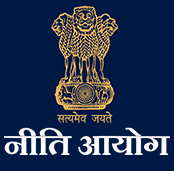Initiating Culture Change through Government Process Review: Learnings for India from UK's Red Tape Challenge
Introduction
The present bureaucratic structure that operates across the Central government and state government is a colonial legacy. World over, governments that had shown progress both in the inside (process and culture change) as well as outside (outcomes and user satisfaction in public goods) had continuously changed their processes/rules with change in time and technology. The UK government started an initiative called the “Red Tape Challenge” (RTC) in the year 2011.
The reason behind this move, from the department of Industry, Strategy and Change in the Government of UK, was that rules and procedures were becoming outdated. Further, these rules were affecting investment in various sectors. Governments across the world are moving to an “enabler mindset” than a “doer mindset”. At the end of the day, public procurement is all about engaging a product or a service through a contract. This contract is executed on the behalf of the government and a third party that would provide this product or a service.
Impact of Red Tape Challenge in UK
The entire process of bringing change in the UK government through RTC was calibrated in a phase-wise methodology. First of all, a website was opened for public and stakeholder inputs on a crowdsourcing model to review all rules, regulations, codes, manuals, which would impact both the public as well as businesses. These inputs were collated, underwent several iterations within the government and between the public, civil society organizations, industry leaders. After thorough scrutiny, nearly 6000 rules and regulations were scrapped, reviewed and updated through this exercise in the UK. This made way to an investment of 70 million GBP to the UK that year.
Need for a RTC in India
It is said that the entire file noting system, which operates in the Government of India as well as the states, was placed by the British—that the person who signs the note subsequently does not trust the one who had placed the proposal in the first place. Thus, the system is based more on mistrust instead of trust. This was because the British at the time of the Raj did not trust the Indian officials (babus) who were working in the provincial civil service.
Further, in this era of artificial intelligence, block chain, predictive analytics and big data, if our rules of operation in the government do not change at least every two years across the Centre and state governments, it would be akin to a race of an aeroplane with a bullock cart.
Process Change Drives Culture Change
With the plethora of apps in the market and the rate of change happening in the technology and business ecosystem, governments should jump on to the bandwagon of change for effective delivery of public services. This would happen, only if the Government Process Review (GPR) is taken seriously by both the Central and state governments. We would not effectively procure any product or service, if our rules are framed thirty or forty years ago. It’s a fad across departments and organizations to make slight amendments when statutory levies change due to change in policy, and that is the show of change. A complete overhaul of rules of operation of every department in the state and the Centre with changing technology would push India into the future. We cannot operate with old rules to see a new future.
Way Forward
To start with, all government organizations should adopt the e-office software developed by NIC. There is reluctance amongst Central and some state governments to shift from manual files to an automated environment. The obsession with the ‘status quo’ is not going to help, if we want change to happen in our organizations. Several state governments have successfully migrated to the e-office software and made way for the paperless office. Further, for those organizations that have not shifted to e-office, strict timelines should be given to implement the same in their organizations, so that there is less scope for tampering records and instilling accountability and trust in public operations.
The state NIC centres provide e-office training in modules. All organizations that are forward-looking should engage with state NIC centres for trainings their officials and staff. Further, they need to replicate the e-office transformation from a nearby office as far as concluding a scanning contract for paper files to e-files and keep a standard operating procedure (SOP) copy in place for institutional memory with strict timelines. Make this whole process public on social media.
All forward-looking organizations can develop apps showcasing the change management initiatives in the government and engage public to click pictures and upload in the app. Say, if a road is not good, and if the state public works department in their app or website had shown “X” amount of rupees was spent between place “A” to “B” for a distance of 5 km and if the road is in a bad shape then it would become “visible development”. Change management in the government should keep the citizen and entrepreneur as the nodal point, area of concern and convergence while rehashing rules and procedures.
All organizations in the Central and state governments have a training division or an Organization and Methods division. This division can be renamed as “Change Management Division” responsible for periodic overhaul of manuals and codes of the organization after stakeholder consultation, either through a crowdsourcing model, viz, website/blog/social media, or through a formal consultative mechanism so that “visible development” is achieved.
These change management divisions should actively sieve data that they would hold in soft copies (Word or Excel sheets) through a data visualization programme like Tableau or any good software, so that trends for the future can be predicted and modelling of scenarios could be done. Further, data visualization in a government entity would also help monitor in checking resource utilization vis-à-vis deliverables and outcomes. If all governments and organizations make this data public, then the amount of RTI queries as well as public grievance litigations against the government and the overheads on the Government to follow up RTI, public grievance and legal cases would substantially reduce.
It can be done in two phases. In the first phase, all government entities should identify through their change management divisions those rules and regulations that are more than ten years old. Make a study on the cost impact to the organization and public about the rule that is old and how the change would reduce the overhead costs for the government as well as act as an enabler to bring in new business ideas and investment.
In the second phase, the change in rules should focus on employee engagement, role of big data and analytics and integrating block chain method in public procurement. One critical factor that has been analysed threadbare is the rise of Artificial Intelligence (AI) and the replacement of manual and/or repetitive work in advanced economies. In the advanced economies, due to an ageing population there is a visible push towards automation for any repetitive task across industry. In India, we have a young population that is looking for employment and opportunities, the impact of AI replacing the manual workforce would eventually happen but at a later stage.
All organizations should have an annual conclave on the GPR initiative so that change management and common standards are institutionalized and are not one-time act/fad. The protection of institutional memory as far as change management is pivotal for growth of an organization as well as the country.
Innovation and entrepreneurship cannot operate in a stagnant rule based entity. They thrive in an ecosystem that allows them to flourish, so that adequate livelihood opportunities are created with a fresh inflow of ideas. Government organizations through the Government Process Review (GPR) method should act as enablers by simplifying rules, rather than make it more complex and difficult to comprehend. We cannot become a first world country with third world rules. We continuously need to evolve our rules of business in the government with change in the operational ecosystem. The way is to be an entrepreneurial bureaucracy.
Changing Modes of Engagement: User Interface(UI)/User experience (UX) - Gamifying Government
With the advent of new technology, especially gamification, governments cannot shy away from being a promoter of user experience of common good, be it good roads, schools or promoting business and engaging in an institutional method of feedback to service. Our ease-of-doing-business rankings can improve provided we embrace change. Change management and risk mitigation are inherent in all forward-looking organizations. We need to institutionalize change management, so that governments act as vibrant entities promoting social goods in a transparent and accountable manner.
This era is not to run but to leapfrog.
*T. Kabilan is Director, NITI Aayog. Views expressed are personal.
 National Portal Of India
National Portal Of India 







